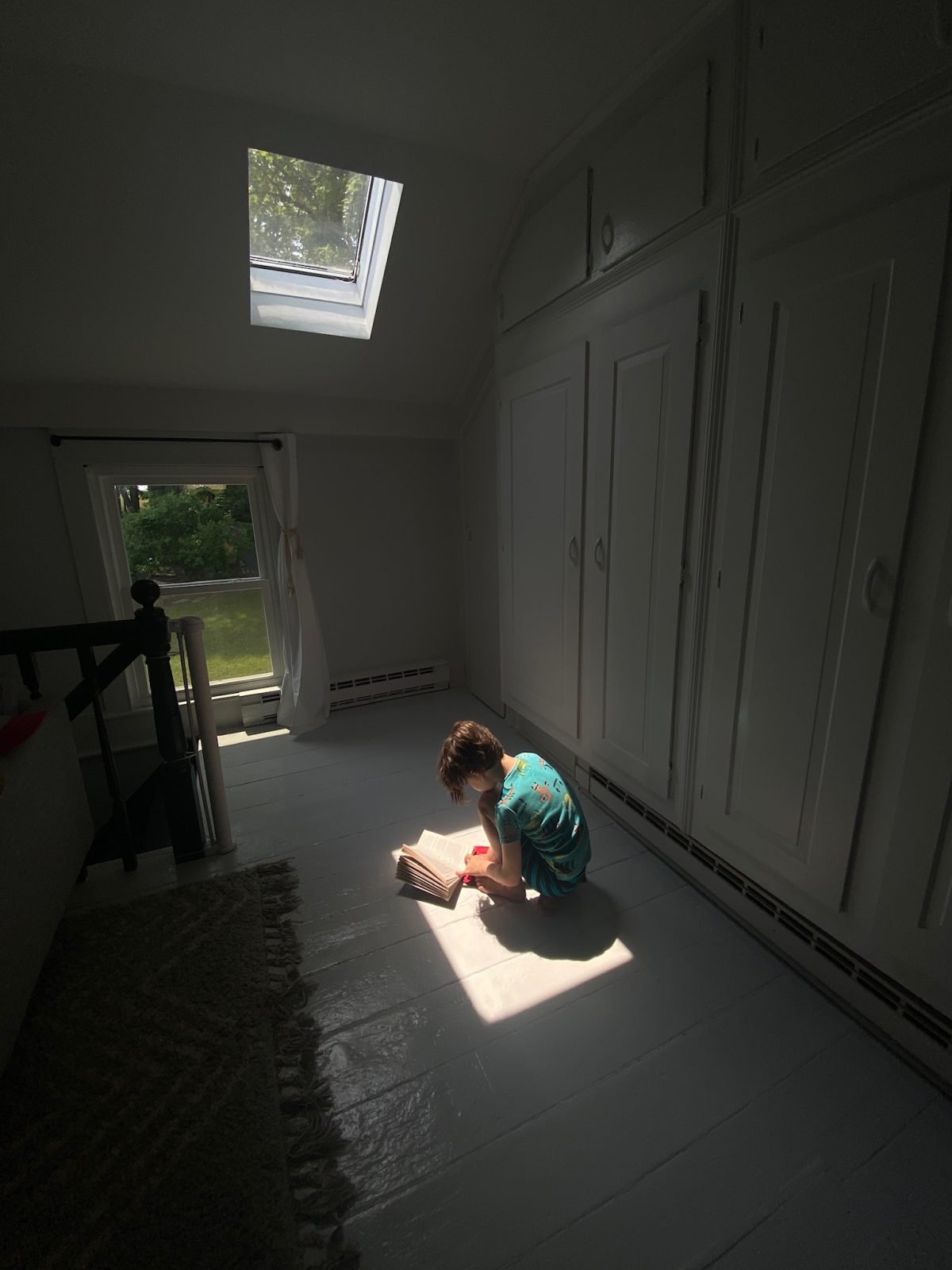
Last October, I wrote about the need for artist residencies to be accessible to artists raising children. Since that essay’s publication, I have learned about a few more residencies that make significant efforts to accommodate artist-parents, such as the Wassaic Project and the Santa Fe Art Institute, both of which offer family residencies as part of their larger program. This is a question of basic equity: nobody should be forced to choose between having a career and having children. American culture has always had difficulty supporting families because in this country work is privileged above all else, but this problem has been especially sharp in art, where the myth of the artist as a (male) loner, detached from society, still holds surprising sway despite the cracks hammered into it by feminist artists over the years.
One recently established residency in New York’s Hudson Valley is, to my knowledge, entirely unique. The Interlude Artist Residency’s mission is as simple as it is remarkable: it is dedicated exclusively to providing residencies for visual artists who are actively parenting. There are other residencies that carve out sessions during the year for parents (like Wassaic) and in Berkeley, there is an invite-only residency for artist-parents, but Interlude is the first of its kind in the United States.

Between now and August 2022, Interlude will host 25 residents. Since it is the residency’s maiden voyage, Director Elsie Kagan tells me she views this as a pilot year; they will adapt the programming based on their experience at year’s end. Kagan, who is also an artist, explained how she developed her idea for Interlude: “I had to turn down several residency opportunities because it was impossible to attend as a young parent and that was painful … I modeled Interlude on the type of program I wished existed: a residency that provides focused work time and connections to a greater art community without ignoring the real and often conflicting requirements of parenthood.”
Interlude provides residents with a no-strings attached stipend, allowing artists to spend the money on whatever best helps them attend. Julia Schwadron Marinelli, who has two children and is at Interlude now as one of the first artists participating, used the stipend to help pay for two weeks of camp at Art Omi. Her parents happen to live near Interlude, so her kids will spend the other two weeks with their grandparents. Her husband is able to be there for the entire residency month, providing yet another layer of support. It is telling that for Schwadron Marinelli to participate, she has lined up camp, grandparents, and her husband.
Nadia Hironaka and Matthew Suib, a couple, have also just settled in at Interlude to start the first residency session. Their daughter is 10 years old and will spend two weeks at camp during the residency month. As with Schwadron Marinelli, the cost of camp was defrayed by Interlude’s stipend. For the other two weeks, their daughter will run around the property exploring all the nooks and crannies at Interlude. “After 16 months of online learning,” Hironaka reflected, “I want her to spend a lot of time outdoors, away from a computer screen. Interlude helped in letting us know what options were available and when to look into camp sign-ups, as these spots can fill up quickly.”
A child outdoors sounds completely obvious, but virtually all artist residencies explicitly forbid children despite the fact that they are typically situated on a gorgeous plot of countryside. By contrast, Interlude welcomes children to live on-site with resident artists for the full length of their stay. Over the residency’s first 12 months, 22 children will be on site all (or most) of the time, while six will be off-site all (or most) of the time, remaining at home with a partner or other family.
Interlude is actively arranging studio visits for its residents with local artists of note. Their Director of Programming is working to pair each resident with artists and arts professionals, including Jeffrey Gibson, Meg Lipke, Nichole Cherubini, James Siena, Polly Apfelbaum, and Jeff Bailey, just to name a few.
“Our focus right now is on making this first year a success,” Kagan told me, “If this model works, it can be a beacon for other residency and artist support programs that are thinking about how to better support parent artists.” I hope so too.


0 Commentaires